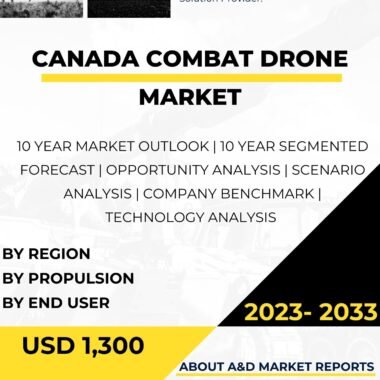Description
Combat helicopters are a critical component of the United States’ military arsenal, providing unparalleled versatility, firepower, and maneuverability on the modern battlefield. These agile and powerful aircraft play a pivotal role in various military operations, including combat, reconnaissance, close air support, and special operations. This article will explore the development, types, capabilities, and significance of U.S. combat helicopters in supporting the nation’s defense and military operations.
The development of combat helicopters in the United States can be traced back to the mid-20th century when the concept of using rotary-wing aircraft for military purposes gained prominence. Early experimental models, such as the Bell H-13 Sioux and the Sikorsky R-4, paved the way for the development of more advanced and specialized combat helicopters.
During the Korean War, combat helicopters demonstrated their unique capabilities, such as troop transport, medical evacuation (medevac), and close air support. The successful deployment of combat helicopters in these roles further solidified their importance in modern warfare.
The Vietnam War marked a significant milestone in the evolution of combat helicopters, with the UH-1 Huey becoming one of the most iconic and widely used military helicopters of that era. The Huey played a crucial role in troop transport, medevac missions, and fire support, providing vital support to ground forces.
The introduction of the AH-1 Cobra, a dedicated attack helicopter, further expanded the capabilities of combat helicopters, providing potent firepower with its cannon and rocket armament. The Cobra was designed to engage enemy armored vehicles and fortifications, effectively serving as a close air support platform for ground troops.
The 1970s and 1980s saw the development of more advanced combat helicopters, such as the AH-64 Apache. The Apache is a highly capable attack helicopter equipped with advanced sensors, weapons systems, and avionics. Its ability to engage targets with precision from stand-off distances makes it a formidable force multiplier on the modern battlefield.
The AH-64 Apache’s successor, the AH-64E Apache Guardian, further enhances combat effectiveness with improved sensors, networking capabilities, and the ability to control unmanned aerial systems (UAS) or drones. The Apache Guardian’s integration of cutting-edge technologies ensures its relevance and effectiveness in future combat scenarios.
In addition to the AH-64 Apache, the U.S. military also employs other specialized combat helicopters, such as the UH-60 Black Hawk and the CH-47 Chinook. The UH-60 Black Hawk is a multi-mission utility helicopter used for troop transport, medical evacuation, search and rescue, and combat support.
The CH-47 Chinook is a heavy-lift helicopter capable of transporting troops, equipment, and supplies over long distances and in challenging environments. Its versatility and lift capacity make it an invaluable asset in various military operations.
Furthermore, the U.S. Marine Corps operates the MV-22 Osprey, a tiltrotor aircraft that combines the capabilities of a helicopter and a fixed-wing aircraft. The Osprey can take off and land vertically like a helicopter and fly at higher speeds and longer ranges like a fixed-wing aircraft. The MV-22 Osprey enhances the Marine Corps’ ability to conduct amphibious operations, long-range insertion missions, and tactical airlift.
The significance of U.S. combat helicopters lies in their ability to provide unmatched mobility, flexibility, and firepower on the battlefield. Combat helicopters offer unique advantages, such as the ability to hover, land in confined areas, and rapidly deploy and extract troops in various terrains.
In combat operations, helicopters are often deployed to provide close air support to ground troops. With their ability to operate at low altitudes and slow speeds, combat helicopters can engage enemy targets with precision and minimal collateral damage.
Moreover, combat helicopters serve as force multipliers, enhancing the capabilities of ground troops and providing critical battlefield awareness through their reconnaissance and surveillance capabilities.
Combat helicopters also play a vital role in medical evacuation (medevac) missions, swiftly transporting wounded personnel from the battlefield to medical facilities for urgent care. These missions are crucial in saving lives and ensuring the welfare of military personnel.
Combat helicopters contribute significantly to special operations missions, where their agility and versatility make them invaluable assets for inserting and extracting special forces in hostile and challenging environments.
The development and modernization of U.S. combat helicopters involve continuous research and investment in cutting-edge technologies. The U.S. Department of Defense (DoD) collaborates with leading defense contractors, such as Boeing, Sikorsky (a Lockheed Martin company), and Bell Textron, to enhance helicopter capabilities and address emerging challenges and threats.
Challenges in combat helicopter development include reducing aircraft weight and increasing lift capacity to accommodate evolving operational requirements and equipment.
The integration of advanced sensors and networking capabilities is also a priority, enabling combat helicopters to operate in complex and contested environments and provide real-time data sharing with ground forces and other military assets.
Additionally, the U.S. military must continuously improve the survivability of combat helicopters against evolving threats, including enemy air defenses and anti-aircraft systems.
Moreover, as adversaries also invest in advanced anti-aircraft capabilities and missile systems, the U.S. military’s ongoing commitment to innovation and adaptation is essential to maintain the superiority and effectiveness of its combat helicopter fleet.
In conclusion, U.S. combat helicopters are a critical and versatile component of the nation’s defense capabilities, providing unmatched mobility, firepower, and flexibility on the modern battlefield.




